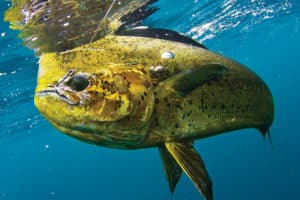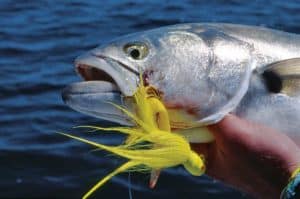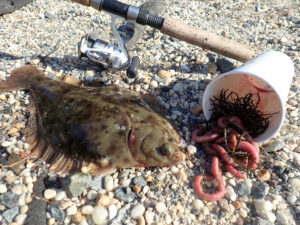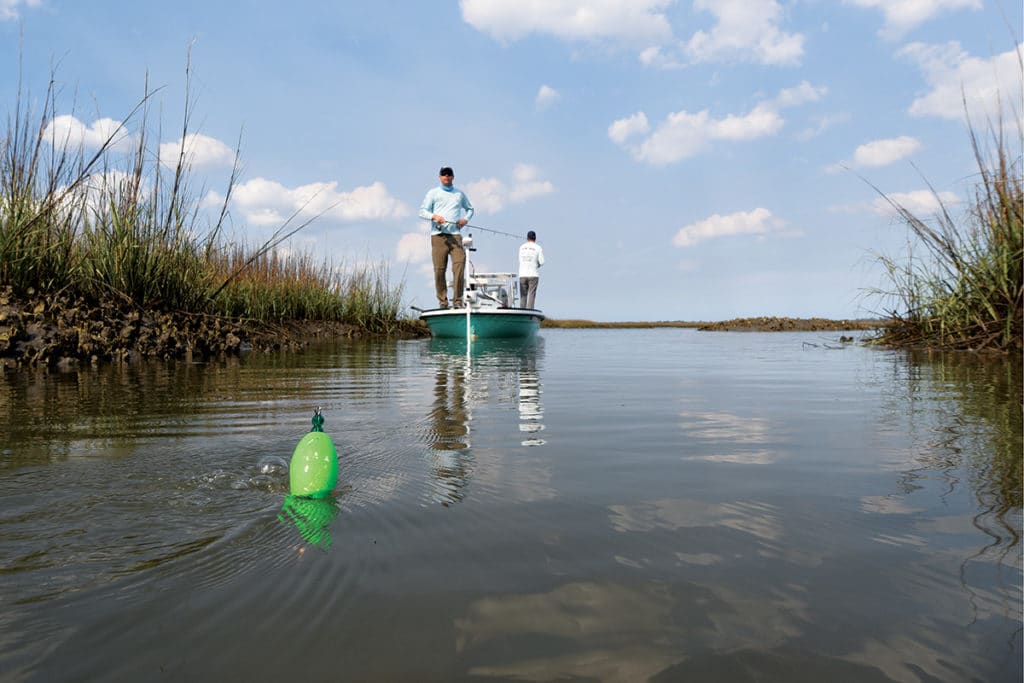
The razzle-dazzle of a slurping, clacking popping cork might seem off-putting at first, but its effectiveness and dominance as a fish catcher is indisputable. While particularly effective and popular in Gulf Coast states, the technique has followers in the Carolinas and beyond.
My baptism into popping corks occurred on my first-ever trip to the toe of the Boot State. Fishing the turbid open bays close to the Gulf, anglers in our boat caught oversize redfish hand over fist until we begged for mercy. What was the best rig for redfish that day? A flashy cork, about 4 feet of leader and a jig-and-bait combo. A topwater plug or “tight-lined” soft plastic did not attract the same interest from the bull redfish we were targeting.
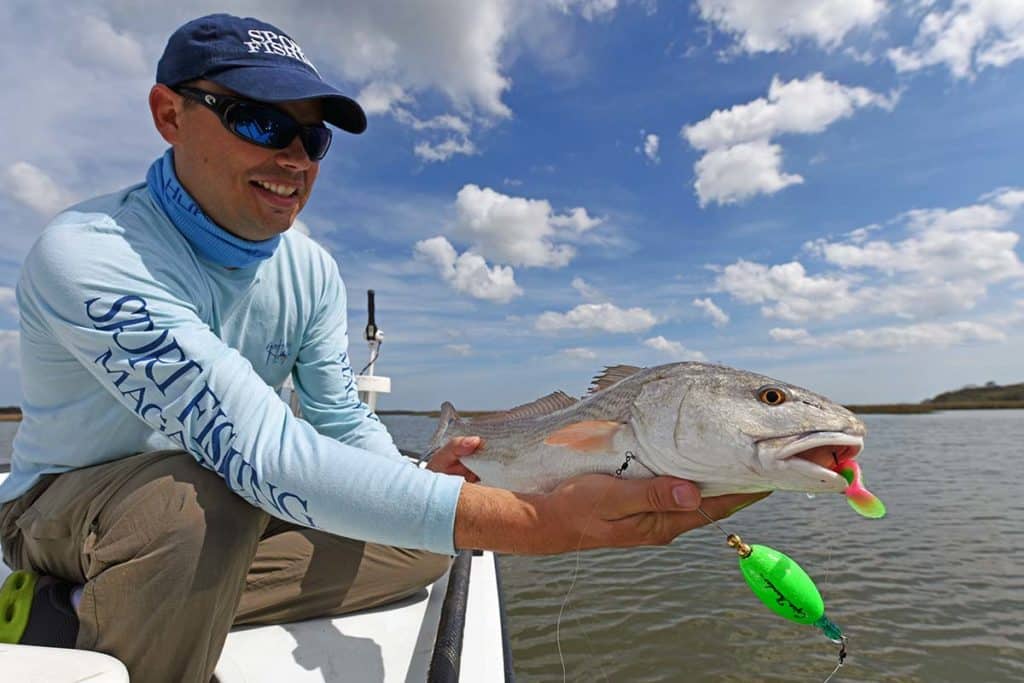
Ever since, I’ve been hooked on corks in off-colored water, paired either with natural baits or lures. It’s my go to redfish rig, and sometimes the popping-cork rig is the only presentation a redfish or speckled seatrout will hit. The main draw of the popping cork is an attention-getting clacking or clicking sound created by beads hitting a foam cork along a metal through-wire. Second, when a cork is jerked by the rod tip, the lure or bait presentation jumps off the bottom like a fleeing bait. A weight attached to the bottom of the cork adds casting distance and stability; swivels at the top and bottom of the wire serve as line ties for the main line and leader. The sound mimics fleeing shrimp, crabs, baitfish or even other game fish attacking prey. Some models of corks also throw a disturbance splash.
When and Where to Use Popping Corks
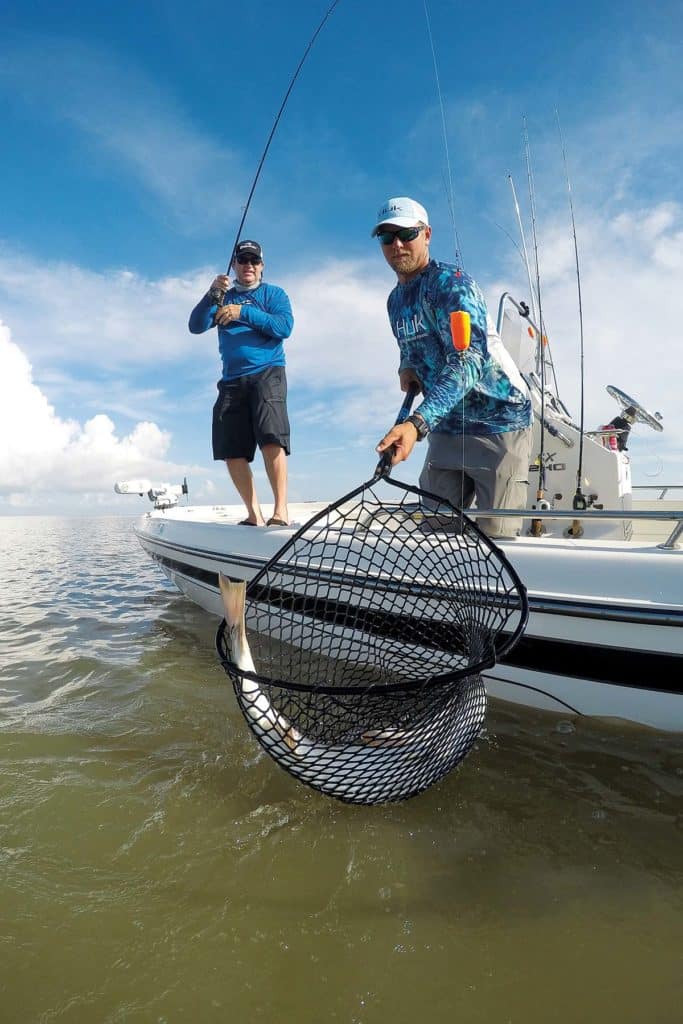
Popping corks are prime to use when water conditions are choppy or turbid, with the best depths from 2 to 6 feet. “If you tie a leader much longer than 6 feet, then casting is difficult with 7- to 7½-foot rods,” says Capt. Ray Markham, of St. Petersburg, Florida. Use light leader material, such as 15- to 20-pound fluorocarbon, in clear water, but bump up to heavier leader in specific situations.
“You can use 20- to 50-pound leader, no problem, with a popping cork, especially in dark-colored water,” says Capt. Richard Stoughton, of Charleston, South Carolina. “I’ve even used 80-pound around structure like docks with success. I tie long leaders in spring and shorter leaders in fall, mostly because fish move into deeper waters in the spring.”
Anglers on the boat should cast different-colored corks so they can pick out their own float in a crowd. Markham prefers to throw less-noisy corks when fish are skittish.
“Where I fish, there isn’t much boat traffic, but the more traffic, the spookier the fish and the less noise I want from my cork,” he says. “Mostly we catch trout and redfish, but incidental catches include bluefish, snook, Spanish mackerel, snapper, grouper, cobia and others.”
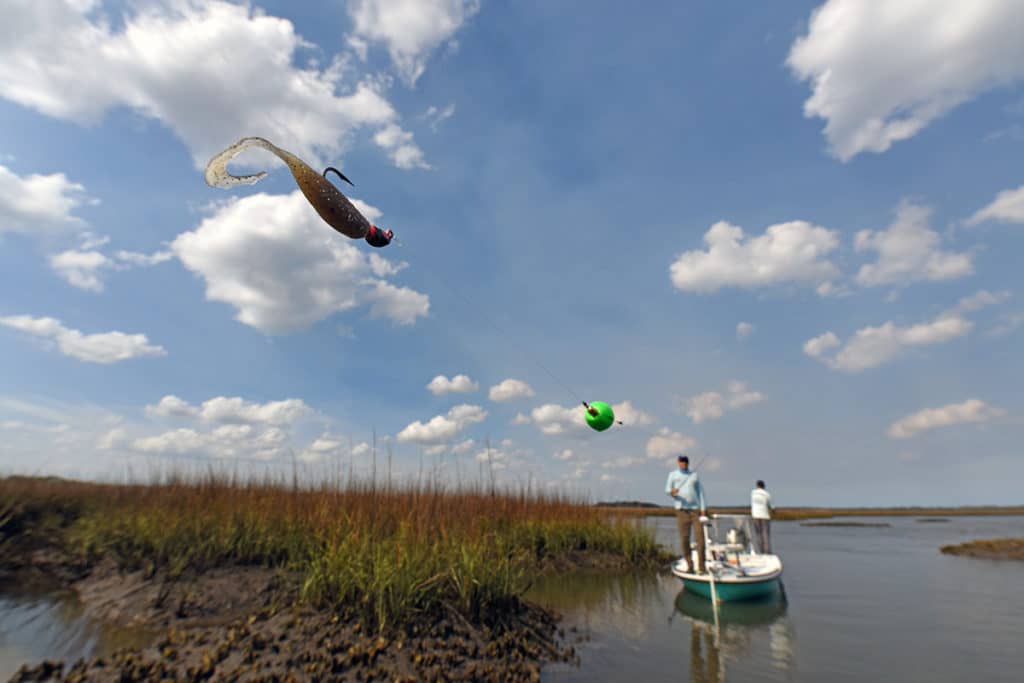
Stoughton prefers to use corks because of the motion of lure imparted by the cork — if done correctly, when a cork is twitched or popped the lure will jump in a vertical motion. When an angler stops popping the cork, the artificial shrimp, jig or live bait will settle back to the bottom. He prefers to impart a double-pop action so the lure jumps twice and then falls.
“Often, I’ll add an egg sinker below the cork on the leader,” says Stoughton. “Pass the leader through the egg sinker twice so a loop wraps around the weight and holds it in place. Don’t let the egg sinker slide too close to the shrimp or jig because it will affect action negatively. Split shot can fall off the leader when a seatrout shakes its head near the boat.”
Some captains will tie their braided main line directly to the top swivel; others add a trace of leader material first. “I use braided lines on my rods, but tying directly to the top swivel of the cork can cause tangling issues,” says Markham. “Instead, tie a short piece of 30-pound fluorocarbon or some other stiff leader that stands away from the cork.”
Popular cork makers include Bomber, Cajun Thunder, Comal Tackle, D.O.A., H&H Lure Co., Red Alert, Four Horsemen and plenty of others. Soft lures to tie below the cork include artificial shrimp from D.O.A., Berkley Powerbait, LiveTarget, Berkley Gulp!, Savage Gear and Z-Man lures. Also, soft plastics pinned to a jig head are popular. But watch out: Sometimes trout or redfish will attack the cork itself. Try casting out a topwater in those situations for exciting surface strikes.
Using Popping Corks With Live Baits
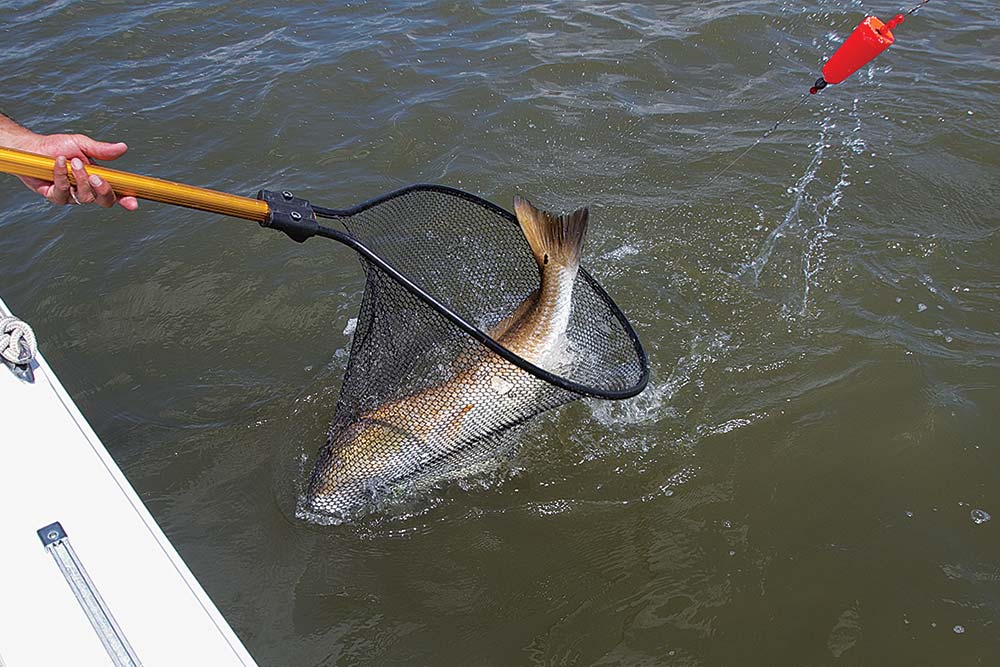
Capt. Jeff Poe, of Lake Charles, Louisiana, ties on a specific type of cork for those customers who want to use live baits, such as shrimp, crabs or fish. “We use spinning tackle with football-shaped weighted corks that have beads on either end,” says Poe. “Their weight makes it easier for our clients to cast farther. Whoever casts farthest wins with the most bites, usually.” The average depth in Calcasieu Lake, where he fishes, is 6 feet, so a cork works anywhere in the lake.
“The deepest water where I’ve ever caught fish with a cork is about 35 feet,” says Poe. “That was around an oil platform in the Gulf. I’ll try a cork anytime I feel I’m around fish but we’re not getting the amount of bites I expect. Corks are a great way to catch fish in dirty water, as the noise attracts and the float suspends your bait in the strike zone.”
Poe strays away from corks in strong current because in those conditions fish hold tight to the bottom. He also won’t tie on a cork near large schools “because as soon as a fish eats your bait and pulls your cork under, other fish will attempt to eat your cork.”
Comparing Different Styles of Popping Corks
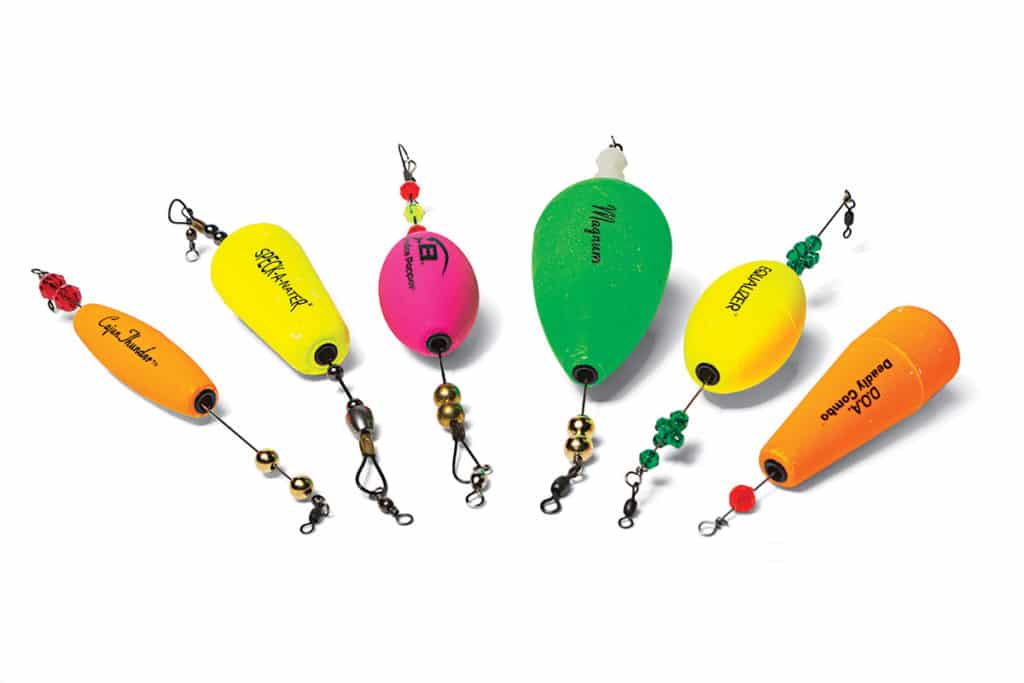
Anglers will notice a host of different-style corks available from a number of makers, with the most common styles shaped like an egg, a cigar or an ice-cream cone with the point bitten off. Each foam cork is different in how it’s built, so personal preference goes a long way in deciding how much you’re willing to pay, what style of cork you want, what type of beads you want, and through-wire material stiffness and durability. Here’s how some manufacturers describe their corks:
Bomber Paradise Popper
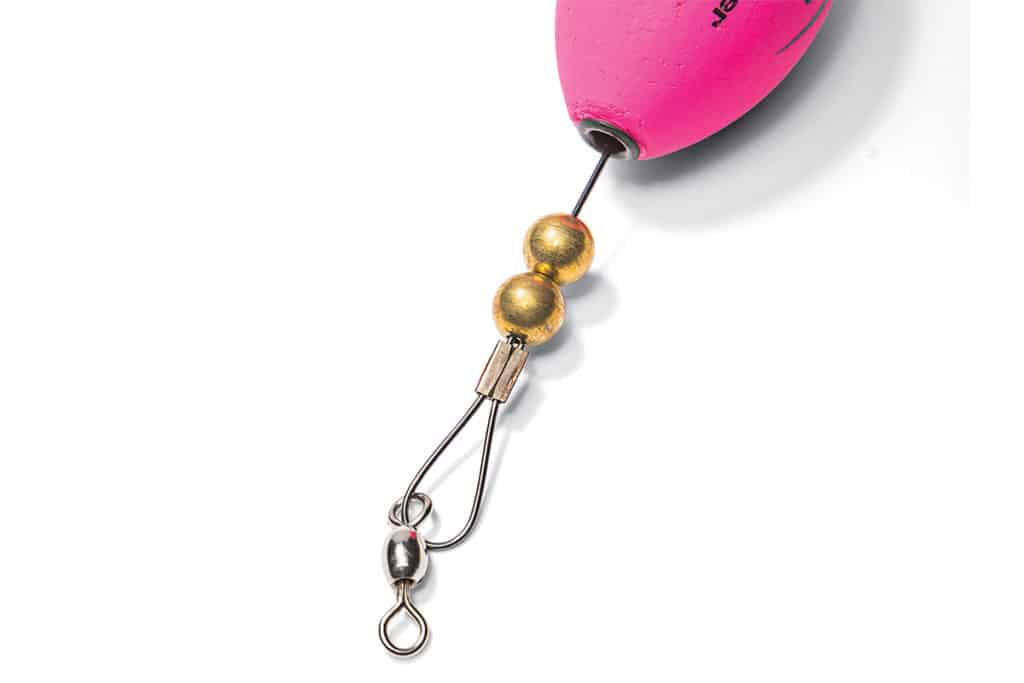
Bomber says: “The Bomber Paradise Popper’s wire is titanium. It springs back to shape. I have seen these corks with the paint and part of the cork gone, and they still produce fish. All of the other components are plastic or brass. The Popper is tested not to break at less than 70 pounds of pressure, and many don’t break until under more than 90 to 100 pounds.”
D.O.A. Popper Clacker
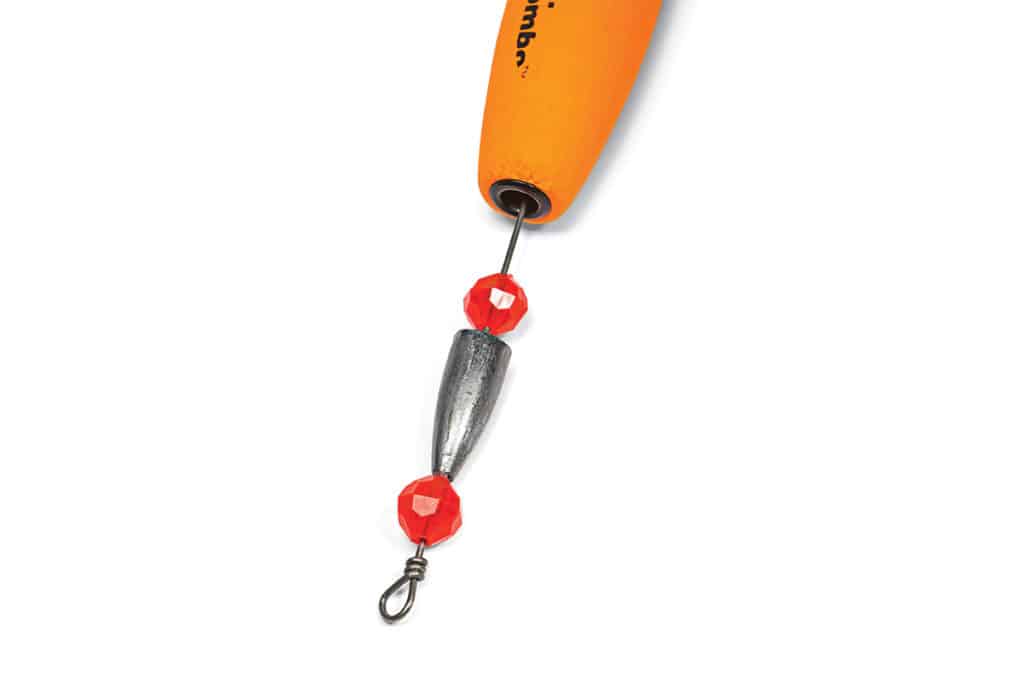
D.O.A. Lures says: “Between the cigar, oval and popper D.O.A. Clacker corks, some make less noise and have a different pitch in the sound they create. The popper style is louder and deeper in tone but also produces a big splash when worked aggressively. Due to the internal weight, the popper is durable and gets less wire bend than do other styles of D.O.A. corks.”
Red Alert Speckanater
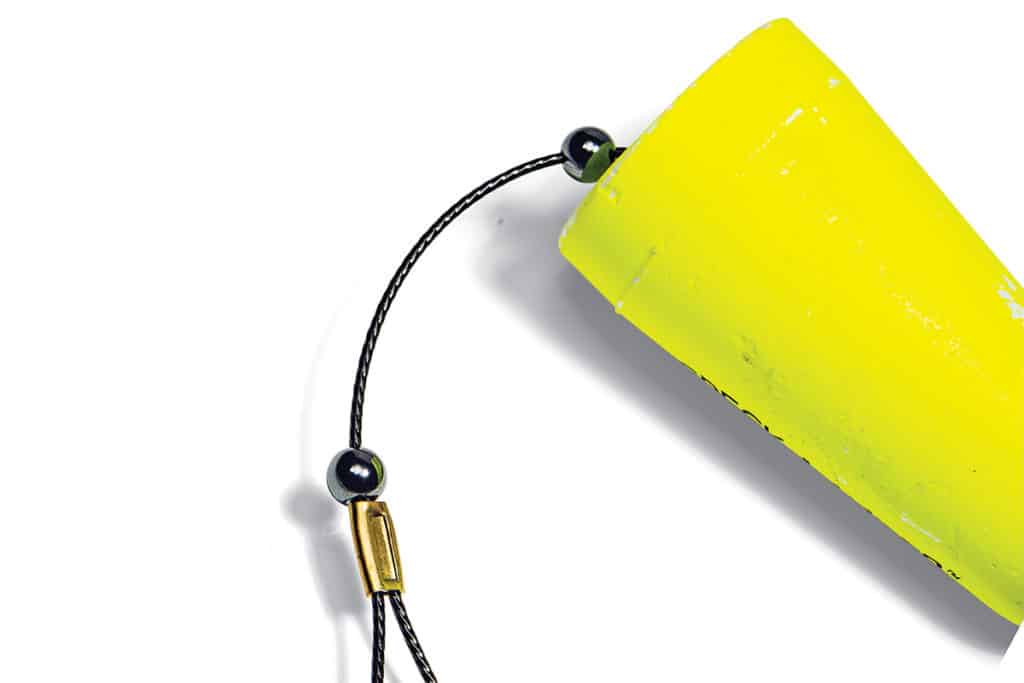
Red Alert Lures says: “There are two unique features about my popping corks. One, the beads used are hematite, which creates a very distinct pitch like a shrimp slapping its tail. Steel inserts in the foam cork also contribute to the sound. Two, the through-wire is rated at 250 pounds but not rigid, with 100-pound swivels at the ends for a longer‑lasting cork.”

